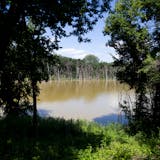Ted Dick has a glass-half-full attitude.
While Minnesota's spring ruffed grouse drumming counts indicate the population has fallen dramatically, Dick, an avid ruffed grouse hunter and the Department of Natural Resources grouse coordinator, said that news last week won't affect him and other diehard hunters.
"I'm still going to hunt, no matter what," he said. "We're still one of the top grouse states in the nation."
But it's uncertain how other hunters will respond to the news of a 46 percent average decline from last year in drumming counts in northern Minnesota's prime grouse range. In the past, hunter numbers rose and fell with the cyclical grouse population. But in 2009, when the grouse population recently peaked, fewer than 90,000 hunters pursued them -- 40,000 to 50,000 fewer than the previous peak.
The grouse population index has dropped significantly in the past three years and signals that the birds are descending on their 10-year boom-to-bust cycle. The statewide index of 1.0 drums-per-stop this spring was half the 2.0 drums-per-stop recorded in 2009 and substantially below the 1.7 drums-per-stop last year. The index refers to the number of drumming birds counted at each stop along preset routes.
The bird population likely will fall further.
"Although it was a substantial drop, it wasn't a drop to the bottom," said Mike Larson, DNR grouse biologist. He estimated the grouse population could bottom out around 2014 before climbing again.
Biologists still don't know why grouse go through the 10-year cycles, but Larson said the DNR won't spend a lot of time or effort trying to solve the puzzle because it's unlikely the agency could manipulate the causes to keep grouse numbers high. The cycle occurs from Alaska to New England.


